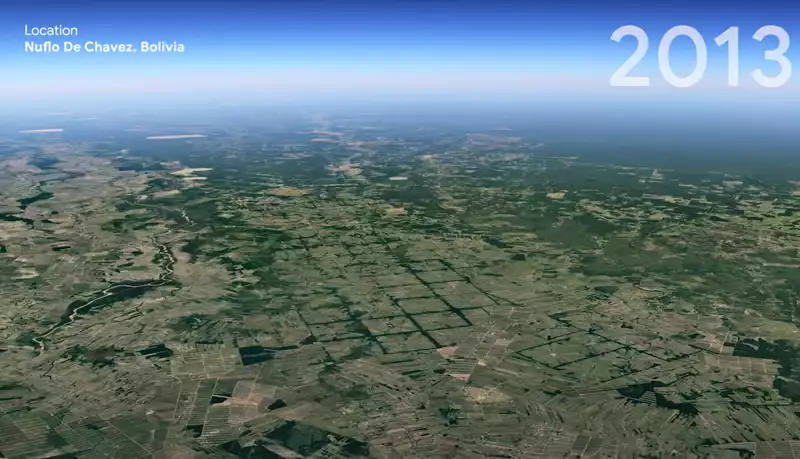Humanity is having an enormous impact on this planet, and Google Earth has launched a new time-lapse feature to show everyone exactly what it looks like.
The severity of human activities such as climate change, deforestation, and desertification can only be seen with your own eyes, and with Google Earth's new Timelapse feature, you can do just that.
Timelapse was developed using 24 million satellite images taken between 1984 and 2020 to create a complete 4.4 terapixel video mosaic. This is the largest update for Google Earth since 2017.
Since Google did not exist in the 1980s and Google Earth did not exist until 2001, the company worked with several agencies, including NASA, the U.S. Geological Survey, the European Commission, and the European Space Agency to collect the necessary images.
The idea behind the update is to help people understand the causes of how the Earth is changing and how it can be used to create positive change. google earth and Google earth Rebecca Moore, director of Outreach, says, "It's a great way to see the landscape of our world. It's not about zooming in. It's not about expanding. It is about taking a big step forward. We need to see what our only home is like."
Try it yourself. In areas like the Amazon rainforest, in particular, immense devastation is occurring as land is cleared and repurposed for agriculture. Watching the melting of ice in places like Antarctica and Alaska is equally depressing.
Naturally, Google has promised to update Timelapse every year going forward, and will continue to do so for at least another decade. That way, we can continue to see how this planet is changing and what humanity is doing to keep ruining this entire planet.
Simply go to Google Earth or open the mobile app version (Google Play / Apple App Store) and press the "Voyager" button that looks like a ship's wheel. A menu with various options will then appear.
Click on the time-lapse option to see the entire planet and how much a particular area has changed between 1985 and 2020. You can use the search bar to navigate to any location and see how that area has changed year over year in the time lapse itself. Just hit the play button and let the app do the rest.
You can also click manually using the timeline on the right side of the page (which appears below the image window on mobile). That way, you can properly view each year before moving on to the next.
Of course, Google has already chosen some examples to show people how things have changed in different areas. They can be accessed as before from the Voyager menu or from the "Stories" and "Featured Places" tabs in the sidebar.
There are not many stories to choose from, but each story cycles through multiple locations around the world and tells what is happening in each. Pictured above is deforestation, with 11 case studies.
Featured Places, as the name implies, allows Google to provide case studies of changing places across 10 different categories and see the changes over the past 35 years. Unlike Stories, however, there is no background information, so what you see is up to you.
You could spend hours looking at how the world has changed, but be sure to take away an important message. Change is inevitable, but much of this change is our fault.










Comments